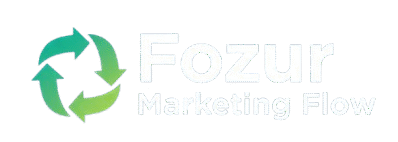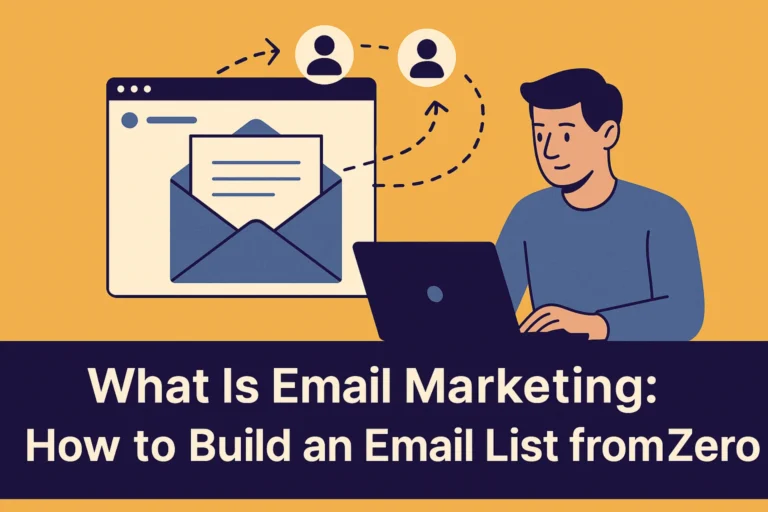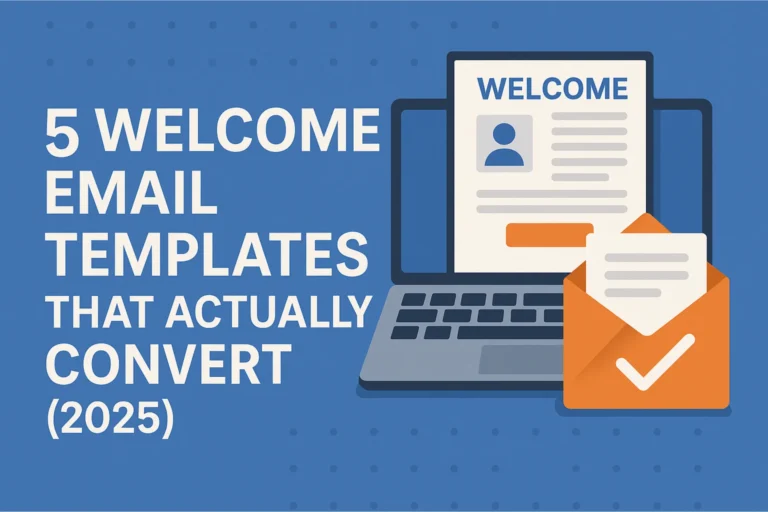How to Create an Automation Flow: A Step-by-Step Guide to Smarter Email Marketing
If you’ve ever found yourself manually following up with leads, sending repetitive welcome emails, or forgetting to nurture your audience after they subscribe — you’re not alone.
Most marketers face this exact struggle: staying consistent while growing their email list. That’s where email automation flows come in.
In this comprehensive guide, you’ll learn how to build an automation flow step-by-step — from planning and logic design to execution in real tools like Brevo, Mailchimp, and ActiveCampaign.com. You’ll also learn the best practices, common mistakes to avoid, and optimization tips used by top marketers to keep their audiences engaged automatically.
Let’s get started.
1. What Is an Automation Flow (and Why It Matters)
An automation flow (or workflow) is a series of predefined actions that automatically trigger when specific conditions are met.
In email marketing, that usually means:
- Trigger — an event that starts the flow (e.g., user subscribes, purchases, or downloads a file).
- Conditions — logic that determines what happens next (e.g., opened an email, clicked a link).
- Actions — the outcome (send an email, apply a tag, add to a segment, notify your team).
Essentially, it’s your marketing strategy — automated.
Why It Matters
- Saves time: No more manual follow-ups.
- Improves conversions: Each email reaches users when they’re most engaged.
- Personalizes communication: Messages feel timely and relevant.
- Scales efficiently: Serve thousands of subscribers with the same precision you’d give one.
Example:
A subscriber joins your list → receives a welcome email → if they click a product link → they’re sent a discount offer.
All of this happens automatically.
Download the Email Automation Flow Setup Checklist
📄 Download Fozur Online Email Automation Flow Setup Checklist (PDF)
2. Plan Before You Build: The Foundation of Every Good Workflow
Before you open any automation tool, take 15 minutes to plan your flow on paper (or whiteboard).
This single habit separates effective marketers from those who end up with broken automations.
Step 1: Define the Goal
Ask yourself:
- What do I want this flow to achieve? (welcome new users, nurture leads, recover carts, etc.)
- What is the final “success” event? (purchase, signup, engagement, reply)
Step 2: Map the Journey
Draw your flow:
- Trigger: “When user subscribes to newsletter”
- Step 1: Send welcome email after 1 hour
- Step 2: Wait 2 days → send educational content
- Step 3: If link clicked → send offer
- Exit: End flow or move to a new sequence
Step 3: Segment Smartly
Don’t dump all subscribers into one automation.
Segment by:
- Source (where they signed up)
- Behavior (opened/clicked previous emails)
- Interest (product category, topic preference)
Step 4: Choose Triggers Carefully
Triggers can include:
- Subscribing to a list
- Opening a specific email
- Visiting a landing page
- Tag added or removed
Proper triggers = cleaner automation + better analytics.
3. Building the Automation Flow (with 3 Popular Tools)
To give you real clarity, let’s build a simple example automation:
“Send a welcome email series to new subscribers, followed by an offer email if they engage.”
We’ll explore how to do it in Brevo, Mailchimp, and ActiveCampaign.
3.1 How to Create an Automation Flow in Brevo
Brevo (formerly Sendinblue) is one of the most user-friendly platforms for marketing automation.
Here’s how to set it up:
Step-by-Step
- Go to Automation → Create a Workflow.
- Choose “Start from Scratch” or “Welcome Message Template.”
- Add Trigger: “When contact joins a list.”
- Add Action: “Send email → Welcome Email #1.”
- Add Delay: Wait 2 days.
- Add Condition: “Did contact open email?”
- If yes, send Email #2 (value-based content).
- If no, resend a modified subject line.
- Add Exit Rule: End automation after final email.
- Test with a dummy contact before activating.
💡 Pro Tip: Brevo allows visual flow testing — use it to see how contacts move through your logic before going live.
3.2 How to Create an Automation Flow in Mailchimp
Mailchimp’s “Customer Journeys” builder is intuitive but slightly limited in free plans.
Step-by-Step
- Go to Automations → Customer Journeys.
- Click “Create Journey.”
- Choose starting point: “When someone subscribes to audience.”
- Add Email 1: Welcome note.
- Add Delay: Wait 1–2 days.
- Add Condition: “If clicked → Yes → send Email 2 (offer).”
- Add an end point for contacts who complete the journey.
Mailchimp is great for simple linear journeys but less ideal for deep branching or CRM-integrated flows.
3.3 How to Create an Automation Flow in ActiveCampaign
ActiveCampaign is a powerhouse for behavioral automation — perfect for growing businesses.
Step-by-Step
- Navigate to Automations → Create a New Automation.
- Choose a trigger: “Tag added,” “Form submitted,” or “Joins list.”
- Add actions: Send email, add delay, or create condition branches.
- Add goals: Define a conversion (e.g., “Made a purchase”).
- Add end action: “Unsubscribe from this flow,” or “Add new tag.”
- Review visually and test before publishing.
💡 Pro Tip: Use ActiveCampaign’s “Goal Tracking” to automatically move users to next steps after conversion.
Mini Comparison Table
| Feature | Brevo | Mailchimp | ActiveCampaign |
|---|---|---|---|
| Ease of Use | ⭐⭐⭐⭐ | ⭐⭐⭐⭐ | ⭐⭐⭐ |
| CRM Integration | ✅ Built-in | ⚠️ Basic | ✅ Advanced |
| Branching Logic | ✅ Yes | ⚠️ Limited | ✅ Yes |
| Best For | Beginners | Freelancers | Advanced users |
4. Best Practices for Automation Flows That Convert
1. Start Simple
Don’t overbuild your first flow. Start with 3–4 steps: welcome, educate, offer, follow-up.
2. Use Delays Thoughtfully
Don’t bombard subscribers — give breathing space.
- Welcome email: 1 hour after signup
- Educational email: 2–3 days later
- Offer email: after 5 days
3. Personalize Every Message
- Use names (
Hi {{first_name}}) - Reference their signup source
- Mention relevant topics or products
4. Add Exit Conditions
Avoid loops. Always include: “End this workflow when X happens (e.g., purchased, unsubscribed).”
5. Test Before You Launch
Use your own email address to go through the flow.
Check:
- Timing accuracy
- Email rendering
- Conditional paths
6. Monitor Metrics
Track open, click, and completion rates.
If open rates drop below 25%, test new subject lines or re-segment your audience.
5. Debugging and Common Pitfalls
Even seasoned marketers make mistakes in automation setups.
Here’s what to watch for:
| Mistake | Symptom | Fix |
|---|---|---|
| Missing exit rule | Contacts get stuck | Always add “end condition” |
| Overlapping triggers | Duplicated emails | Review all active workflows |
| Too many filters | No one enters flow | Simplify entry rules |
| Delays too short | Feels spammy | Space emails 24–48h apart |
| Mis-tagging | Wrong segment actions | Audit tag logic monthly |
💡 Pro tip: Periodically test each workflow with a dummy contact and trace every step in the log — this ensures the logic still behaves as expected even months later.
6. Tracking, Metrics & Optimization
To know if your automation works, watch these key metrics:
| Metric | Ideal Range | Why It Matters |
|---|---|---|
| Open Rate | 25–40% | Measures subject relevance |
| Click Rate | 3–8% | Shows engagement |
| Unsubscribe Rate | < 1% | Indicates content relevance |
| Conversion Rate | 1–5% | Real business impact |
Optimization Ideas
- A/B Test: Try different email sequences or delays.
- Refine Segments: Remove inactive users.
- Use Behavior Data: Move contacts to different flows automatically.
- Clone & Iterate: Duplicate high-performing flows for other campaigns.
7. Other Tools Worth Exploring
While Brevo, Mailchimp, and ActiveCampaign dominate, you may also consider:
- MailerLite: Simplified automation and clean UI for beginners.
- HubSpot: CRM + marketing automation under one roof.
- Drip: Great for e-commerce automations and cart recovery.
- ConvertKit: Perfect for creators and newsletter-based businesses.
Each of these tools supports the same logic: trigger → condition → action → goal.
Conclusion
Marketing automation isn’t just about saving time — it’s about building meaningful customer journeys automatically.
By planning your workflow, implementing clear triggers, and optimizing based on data, you’ll turn casual subscribers into loyal customers without constant manual effort.
Whether you use Brevo, Mailchimp, ActiveCampaign, or any other platform, the formula remains the same:
Plan. Build. Test. Optimize. Repeat.
Start today with one simple flow — your future self (and your inbox) will thank you.
Frequently Asked Questions
1️⃣ What is an automation flow in email marketing?
An automation flow is a series of automated steps triggered by specific user actions — like signing up, opening an email, or clicking a link.
It defines what happens next for that user, such as sending a follow-up email, assigning a tag, or moving them to a new list.
In short, it’s a visual workflow that helps you send timely, personalized, and consistent emails without manual effort.
2️⃣ How do I create an email automation flow from scratch?
To create an automation flow, follow these steps:
- Define your goal (e.g., welcome new subscribers, nurture leads).
- Choose a trigger (user signs up, purchases, etc.).
- Add actions like sending emails or applying tags.
- Set conditions and delays to control timing.
- Test and activate your flow.
Tools like Brevo, Mailchimp, and ActiveCampaign make this easy with drag-and-drop workflow builders.
3️⃣ What are the best tools for creating automation flows?
The best email automation tools depend on your business size and needs:
- Brevo (Sendinblue): Best all-in-one solution with CRM integration.
- Mailchimp: Ideal for simple, beginner-friendly automations.
- ActiveCampaign: Advanced behavior-based flows for serious marketers.
- MailerLite: Great balance between simplicity and cost.
- HubSpot: Enterprise-level automation with CRM and analytics.
Choose a platform that matches your level of complexity and integration needs.
4️⃣ How can I improve the performance of my email automation flows?
You can increase engagement by optimizing every part of your workflow:
- Personalize with name, behavior, or location data.
- Space your emails 24–48 hours apart.
- A/B test subject lines and CTAs.
- Add clear exit rules to prevent repeated emails.
- Regularly review your metrics and tweak low-performing steps.
Strong automation flows evolve over time through data-driven iteration.
5️⃣ What are common mistakes to avoid when building automation workflows?
Avoid these pitfalls that can break or weaken your flow:
- ❌ No exit rule (causes infinite loops).
- ❌ Too many filters (contacts never enter).
- ❌ Sending emails too frequently (causes unsubscribes).
- ❌ Not testing logic with a dummy contact.
- ❌ Ignoring non-engaged users (hurts deliverability).
Always test your automation end-to-end before going live and monitor it monthly for errors or deliverability issues.


